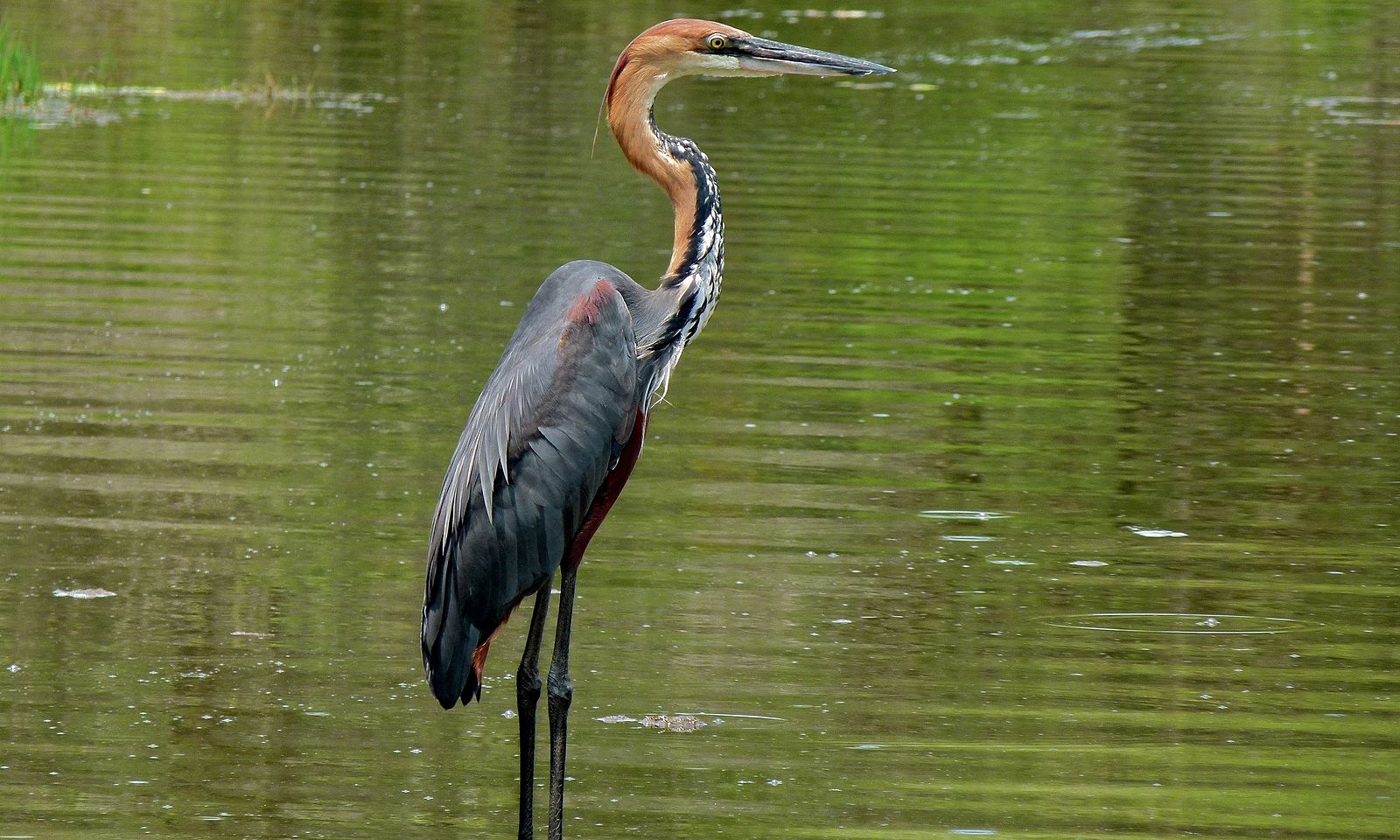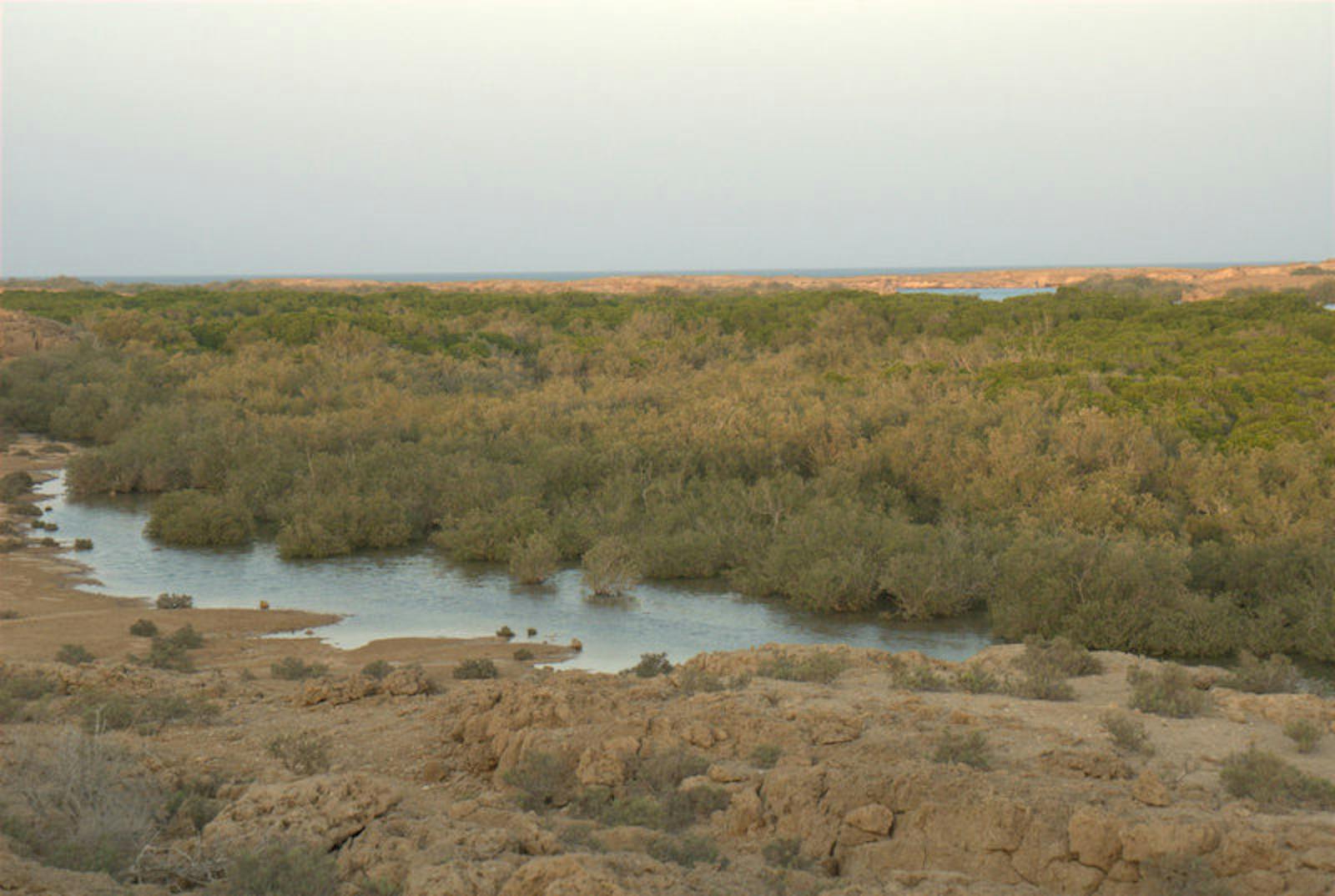Red Sea Mangroves
The ecoregion’s land area is provided in units of 1,000 hectares. The protection goal is the Global Safety Net (GSN1) area for the given ecoregion. The protection level indicates the percentage of the GSN goal that is currently protected on a scale of 0-10.
Bioregion: South Red Sea & Gulf of Aden Coastal Drylands (AT22)
Realm: Afrotropics
Ecoregion Size (1000 ha):
117
Ecoregion ID:
115
Conservation Target:
N/A
Protection Level:
N/A
States: Djibouti, Somalia, Sudan, Egypt, Yemen, Saudi Arabia, Eritrea
The Red Sea is devoid of riverine nutrient inputs which, along with the high salinities, high temperatures, and low precipitation, has resulted in dwarfed mangroves. The dwarf trees are approximately 2–3 m in height. The main nutrient source is from monsoonal-driven horizontal intrusion of nutrient rich waters from the Indian Ocean. Additional nutrients are from dust deposition and below surface mixing of the nutricline in the Red Sea.
The ecoregion consists of small scattered patches of mangrove stands along the Red Sea coast in Djibouti, Northern Somalia, Sudan, Egypt, Yemen, Saudi Arabia, and Eritrea. They cover approximately 135 km2 and only occur along the coastlines because there are no permanent rivers and estuaries where they could grow. The dominant climatic influences on most of the region are the seasonal wind patterns associated with the Northeast monsoon (NEM) and the Southeast monsoon (SEM) which is the main nutrient source into the region. The intruding water flows northward and barely reaches the central Red Sea resulting in an oligotrophic gradient towards the north.

the flagship species of the Red Sea Mangroves ecoregion is the goliath heron. Image credit: Creative Commons
There is high salinity in this region due to substantial evaporative losses. The stands are approximately 3–4 m tall due to the extreme conditions including high salinity over 40 ppt, low rainfall, and extreme sea surface temperatures over 31°C in summer as well as no permanent freshwater inputs. The rainy season is from November to April. There is a general global decline of mangroves; however, Red Sea mangroves have expanded by 12% between 1972 and 2013, especially along the Eritrea coastline where there are large mangrove stands.
The mangroves provide shelter and refuge for the juveniles of many important species of fish, shrimps, crabs, and molluscs. Mangrove forests also play an important role in preventing shoreline erosion. Mangrove stands in the Red Sea are mainly monospecific with Avicennia marina as the dominant species. Red sea mangroves are important nesting, feeding, and roosting sites for several birds such as the Goliath heron, Pink-backed pelican, reef heron, and the black kite. The Goliath heron is the world’s largest living heron that stands up to 1.5 m in height.
Approximately 2 million emigrant birds including waders, herons, egrets, kingfishers, pelicans, ospreys, and cormorants use this ecoregion as a resting site. Mangroves also support a variety of fish species which are not residents, however, they use the mangroves as nursery grounds. For example, black seabream, milkfish, tiger Perch, and common ponyfish. The ecoregion also supports a rich community of macrofauna including the grasped crab, scyphooan jellyfish, and sea spiders. The trees trunk and pneumatophores provide habitats for intertidal species including barnacles, oysters, and Littorina.
Apart from their ecological value, mangroves play an extremely important economic role. They stabilize the coastline, protect coastal developments, absorb pollution, provide feeding and breeding grounds for fisheries, and supply many natural resources. Several protected areas contain mangrove forest including the Haramous Area protected for habitat and species.
The principle threat to Red Sea mangroves is overgrazing by camels, particularly in Djibouti, Sudan, and Yemen resulting in significant habitat degradation. Other major threats include coastal development of roads, harbours, hotels, and airports especially in Saudi Arabia. Mangroves also receive untreated agricultural waste and sewage discharged to coastal waters, as well as industrial pollution, silt from erosion and dumping of dredging, and pesticides in runoff. Additionally, logging for fuel wood occurs which alters the sediment characteristic resulting in habitat change threatening biodiversity. An increasing threat is from climate change and its associated impacts, which include sea level rise, increased storminess, increased temperatures, and changes in precipitation. Mangroves are particularly sensitive to inundation duration and frequency so increased flooding can result in severe mangrove decline.
The priority conservation actions for the next decade will be to: 1) establish an increased number of protected areas including marine protected areas and nature reserves; 2) continue implementing rehabilitation and reforestation programmes; and 3) facilitate public awareness and encourage local community participation in conservation activities.
Citations
1. PERSGA/GEF. 2004. Status of Mangroves in the Red Sea and Gulf of Aden. PERSGA Technical Series No. 11. PERSGA, Jeddah.
2. Almahasheer, H., Aljowair, A., Duarte, C.M. and Irigoien, X. 2016. Decadal stability of Red Sea mangroves. Estuarine, Coastal and Shelf Science. 169, pp.164-172.
3. Almahasheer, H., Duarte, C.M. and Irigoien, X., 2016. Nutrient limitation in central Red Sea mangroves. Frontiers in Marine Science. 3, p.271.
4. Ward, R.D., Friess, D.A., Day, R.H. and MacKenzie, R.A., 2016. Impacts of climate change on mangrove ecosystems: a region by region overview. Ecosystem Health and Sustainability. 2(4).




